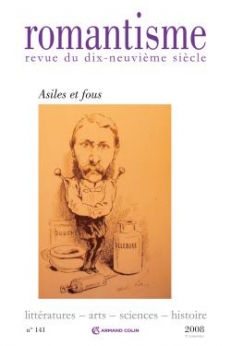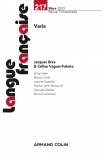
Romantisme n° 141 (3/2008)
Pour acheter ce numéro, contactez-nous
Recevez les numéros de l'année en cours et accédez à l'intégralité des articles en ligne.
Durant l’entre-deux guerres, les mouvements d’avant-garde, et notamment les surréalistes, s’emparèrent des textes de fous du XIXe siècle, déclarant qu’il y avait une parenté étroite entre art et folie, les aliénés étant finalement les premiers à s’être « libérés » du carcan des normes de l’écriture et de la société. Puisant leur inspiration dans le corpus psychiatrique, ces écrivains prétendirent alors donner un statut d’oeuvres à des écrits que l’on considérait auparavant uniquement comme du matériau pathologique. En retraçant les chemins par lesquels les écrits de malades du XIXe siècle ont traversé les barrières disciplinaires, cet article entend nuancer la position de rupture que l’avant-garde s’est ainsi attribuée. Dès le XIXe siècle les aliénistes ont en effet été sensibles à la beauté de ces textes et ont interrogé les liens entre folie et création. Or en niant cette filiation avec le discours médical, dont ils perpétuent les pratiques, les surréalistes ont laissé de côté un problème sous-jacent : que signifie de dire des fous qu’ils sont artistes, sans pour autant leur reconnaître le statut d’auteurs.
During the interwar period, French avant-garde writers, especially surrealists, became obsessed with texts written by nineteenth-century lunatics and suggested that there was a close connexion between art and madness, as insanity consisted in being “free” from social and linguistic norms. As they sought inspiration in writings extracted from psychiatric literature, they claimed that they were the first ones to see the insane as artists, when physicians had only considered their work as clinical material. By exploring the ways through which nineteenthcentury patients’ writings crossed disciplinary boundaries, this article will demonstrate that the avant-garde was not really fair. Nineteenth-century physicians were already interested in the literary qualities of these texts and tried to understand which connexions there were between madness and creativity. As they denied this legacy, surrealists did not realize that the so-called “artistic” status they gave to the insane – writers who did not realize they were writing – was quite problematic.

